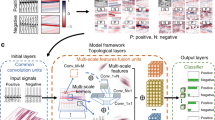Abstract
To detect bull’s-eye anomalies in low-frequency seismic inversion models, the study proposed an advanced method using an optimized you only look once version 7 (YOLOv7) model. This model is enhanced by integrating advanced modules, including the bidirectional feature pyramid network (BiFPN), weighted intersection-over-union (wise-IoU), efficient channel attention (ECA), and atrous spatial pyramid pooling (ASPP). BiFPN facilitates robust feature extraction by enabling bidirectional information flow across network scales, which enhances the ability of the model to capture complex patterns in seismic inversion models. Wise-IoU improves the precision and fineness of reservoir feature localization through its weighted approach to IoU. Meanwhile, ECA optimizes interactions between channels, which promotes effective information exchange and enhances the overall response of the model to subtle inversion details. Lastly, the ASPP module strategically addresses spatial dependencies at multiple scales, which further enhances the ability of the model to identify complex reservoir structures. By synergistically integrating these advanced modules, the proposed model not only demonstrates superior performance in detecting bull’s-eye anomalies but also marks a pioneering step in utilizing cutting-edge deep learning technologies to enhance the accuracy and reliability of seismic reservoir prediction in oil and gas exploration. The results meet scientific literature standards and provide new perspectives on methodology, which makes significant contributions to ongoing efforts to refine accurate and efficient prediction models for oil and gas exploration.
Similar content being viewed by others
References
Araya-Polo M, Dahlke T, Frogner C, et al., 2017. Automated fault detection without seismic processing[J]. The Leading Edge, 36(3): 208–214.
Bochkovskiy A, Wang C Y, Liao H Y M, 2020. YOLOv4: Optimal Speed and Accuracy of Object Detection[A]. ar**v.
Chen L C, Papandreou G, Kokkinos I, et al., 2017. DeepLab: Semantic Image Segmentation with Deep Convolutional Nets, Atrous Convolution, and Fully Connected CRFs[A]. ar**v.
Ding X, Zhang X, Ma N, et al., 2021. RepVGG: Making VGG-style ConvNets Great Again[C]//2021 IEEE/CVF Conference on Computer Vision and Pattern Recognition (CVPR). Nashville, TN, USA: IEEE: 13728–13737.
He K, Zhang X, Ren S, et al., 2015. Spatial Pyramid Pooling in Deep Convolutional Networks for Visual Recognition[J]. IEEE Transactions on Pattern Analysis and Machine Intelligence, 37(9): 1904–1916.
Hu J, Shen L, Sun G, 2018. Squeeze-and-Excitation Networks[J].
** C K, Wang Y G, Shang X M, et al., 2020. Near-surface velocity modeling based on micro-log and azimuth-weighted interpolation[J]. OIL GEOPHYSICAL PROSPECTING, 55(2): 257–265.
Kim K G, 2016. Book Review: Deep Learning[J]. Healthcare Informatics Research, 22(4): 351.
Lin T Y, Dollar P, Girshick R, et al., 2017. Feature Pyramid Networks for Object Detection[C]//2017 IEEE Conference on Computer Vision and Pattern Recognition (CVPR). Honolulu, HI: IEEE: 936–944.
Liu C, Zhao Q, Liu Z, et al., 2022. Development and Testing of a High-Resolution Three-Dimensional Seismic Detection System for Gas Hydrate[J]. Journal of Marine Science and Engineering, 11(1): 20.
Liu S, Qi L, Qin H, et al., 2018. Path Aggregation Network for Instance Segmentation[A]. ar**v.
Liu W, Anguelov D, Erhan D, et al., 2016. SSD: Single Shot MultiBox Detector[M]. 21–37.
Lu X, Wang Q, Zhang X, et al., 2024. Machine Learning-Based Precursor Detection Using Seismic Multi-Parameter Data[J]. Applied Sciences, 14(6): 2401.
Maas A L, Hannun A Y, Ng A Y. Rectifier Nonlinearities Improve Neural Network Acoustic Models[J].
Niksejel A, Zhang M, 2024. OBSTransformer: a deep-learning seismic phase picker for OBS data using automated labelling and transfer learning[J]. Geophysical Journal International, 237(1): 485–505.
Paszke A, Gross S, Massa F, et al., 2019. PyTorch: An Imperative Style, High-Performance Deep Learning Library[J].
Redmon J, Farhadi A, 2018. YOLOv3: An Incremental Improvement[A]. ar**v.
Ren S, He K, Girshick R, et al., 2017. Faster R-CNN: Towards Real-Time Object Detection with Region Proposal Networks[J]. IEEE Transactions on Pattern Analysis and Machine Intelligence, 39(6): 1137–1149.
Sung H, Ferlay J, Siegel R L, et al., 2021. Global Cancer Statistics 2020: GLOBOCAN Estimates of Incidence and Mortality Worldwide for 36 Cancers in 185 Countries[J]. CA: A Cancer Journal for Clinicians, 71(3): 209–249.
Tan M, Pang R, Le Q V, 2020. EfficientDet: Scalable and Efficient Object Detection[C]//2020 IEEE/CVF Conference on Computer Vision and Pattern Recognition (CVPR). Seattle, WA, USA: IEEE: 10778–10787.
Tong Z, Chen Y, Xu Z, et al., 2023. Wise-IoU: Bounding Box Regression Loss with Dynamic Focusing Mechanism[A]. ar**v.
Walden A T, Hosken J W J, 1985. AN INVESTIGATION OF THE SPECTRAL PROPERTIES OF PRIMARY REFLECTION COEFFICIENTS*[J]. Geophysical Prospecting, 33(3): 400–435.
Wang C Y, Bochkovskiy A, Liao H Y M, 2023. YOLOv7: Trainable Bag-of-Freebies Sets New State-of-the-Art for Real-Time Object Detectors[C]//2023 IEEE/CVF Conference on Computer Vision and Pattern Recognition (CVPR). Vancouver, BC, Canada: IEEE: 7464–7475.
Wang Q, Wu B, Zhu P, et al., 2020. ECA-Net: Efficient Channel Attention for Deep Convolutional Neural Networks[C]//2020 IEEE/CVF Conference on Computer Vision and Pattern Recognition (CVPR). Seattle, WA, USA: IEEE: 11531–11539.
Wang Z, Cheng S, Liu C, 2013. Error Analysis of Several Two-Dimensional Interpolation Methods in the Geophysical Exploration[N]. Journal of Jilin University (Earth Science Edition), 2013 (1997–2004).
Yilmaz Ö, 2001. Seismic Data Analysis: Processing, Inversion, and Interpretation of Seismic Data[M]. Society of Exploration Geophysicists.
Acknowledgments
The research project is funded by the horizontal project of the Disaster Prevention Science and Technology Institute on the testing of reservoir geological model software (XY202303).
Author information
Authors and Affiliations
Corresponding author
Additional information
Li Jun, Graduate student, Institute of Disaster Prevention, China. His main research direction is the application of deep learning in petroleum geology, including seismic signal processing, reservoir description, seismic fracture detection, and geophysical prediction of shale oil and gas. He is committed to develo** and optimizing algorithms to improve the accuracy and efficiency of oil and gas exploration.
Rights and permissions
About this article
Cite this article
Li, J., Meng, Jb. & Li, P. Detecting the Bull’s-Eye Effect in Seismic Inversion Low-Frequency Models Using the Optimized YOLOv7 Model. Appl. Geophys. (2024). https://doi.org/10.1007/s11770-024-1118-3
Received:
Revised:
Published:
DOI: https://doi.org/10.1007/s11770-024-1118-3




